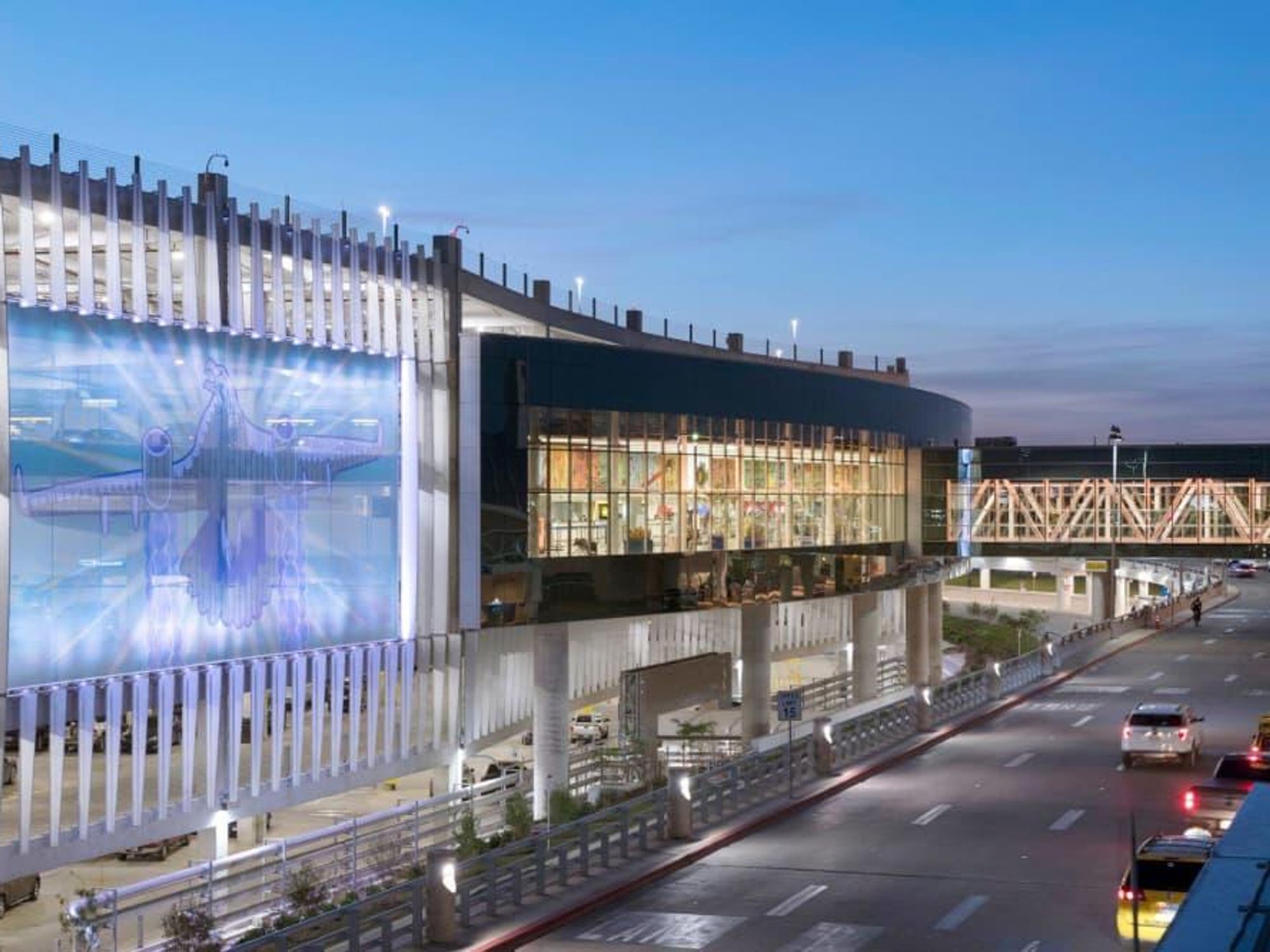SAT down for this news
San Antonio airport launches plan to add more international nonstop flights

San Antonio International Airport (SAT) is the largest airport in South Texas, yet it only has five international nonstop routes, all of which service Mexico. A new multimillion-dollar fund launched earlier this month hopes to change that by courting direct flights to cities in Canada, Europe, and beyond.
The new Air Service Development Fund, launched by greater:SATX (and all funded by the private sector) will begin with a $3 million investment over the next two years. Its goal is to establish “marketing and in-kind partnerships” to attract additional flights to the Alamo City, according to a July 8 release.
San Antonio is home to two of Texas’ most popular tourist destinations — the River Walk and the Alamo — and is increasingly lauded among the best cities in the country. And though the region welcomes more than 40 million visitors per year, SAT only serves about 10 million passengers annually. (By comparison in 2021, 62.5 million people traveled through Dallas-Fort Worth International Airport, 16.8 million visited George Bush Intercontinental Airport, and 13.5 million flew out of Austin-Bergstrom International Airport.)
While increasing nonstop destinations would expand access for fliers, it also positions San Antonio to attract more business investment. Already headquarters to financial corporations like USAA, major tech companies like Rackspace, and big-name energy companies like Valero, the region is increasingly on the short-list for businesses looking to establish a presence in Texas without paying for pricey Dallas or Austin real estate.
And it’s a trend that city and business leaders are eager to capitalize on.
“It’s time for us to leverage our resources from across the region to reach the next level,” said H-E-B president Craig Boyan, who is also an officer of greater:SATX. “This initiative can help our greater San Antonio region attract more business investment that ultimately provides more jobs for San Antonians.”
The new fund was launched amid the San Antonio airport’s $2.5 billion capital improvement project designed to “support significant passenger and air service growth into the future.” The Terminal Development Program, which was approved in November 2021 and is currently underway, includes the addition of five new gates and construction of a third terminal. The program will also add a ground transportation center, parking garage, and realign roads around the terminal.
“This is an investment in our city’s future and our economic growth. Our ultimate goal is to elevate the passenger experience. We initiated the implementation of the Strategic Development Program which encompasses the Terminal Development Program the day City Council approved the plan," said Jesus H. Saenz, Jr., director of airports, San Antonio Airport System, in a May news release.
The plan is designed to alleviate stress on the airport, especially as San Antonio’s population continues to boom. San Antonio was the fastest-growing city in the country last year in terms of actual numbers of new people, according to the U.S. Census Bureau. Last year, 13,626 people moved to San Antonio, placing it in the No. 1 spot, while 7,538 moved to New Braunfels, making it the ninth fastest-growing city.
Hopefully this kind of preplanning will help offset a situation like that happening in Austin. After a decade of unprecedented growth, Austin-Bergstrom is projected to hit 22 million passengers this year, according to Austin news station KXAN.
In March, the crush of passengers at the two-terminal airport got so bad airport officials had to beg TSA to send more agents, igniting a back-and-forth blame game between ABIA and the feds. Eventually, TSA had to issue multiple statements assuring fliers that wait times would improve. On July 15, the airport received $15 million as part of President Biden’s Infrastructure Investment and Jobs Act to help speed up the airport expansion that is already underway.
That kind of situation is one the City of San Antonio says it’s hoping to avoid. “Planning for the growth and demand in the San Antonio region continues to be our focus,” said City Manager Erik Walsh. “As we continue to emerge from the pandemic, we’ve seen continued interest from air service providers to reallocate and adjust their routes. With the significant investments our region is making, the greater San Antonio area stands to gain significant service into the future.”
